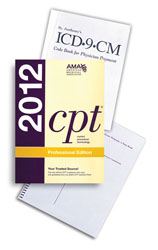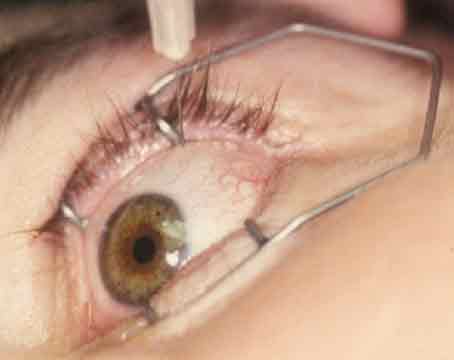Q. What new Category I ophthalmic codes appear in the 2012 Current Procedural Terminology manual?
A. CPT code 92070, Fitting of contact lens for treatment of disease, including supply of lens, has been deleted and replaced by two new codes. They are:
- 92071: Fitting of contact lens for treatment of ocular surface disease.
- 92072: Fitting of contact lens for management of keratoconus, initial fitting. (For subsequent fittings, report using Evaluation and Management services or General Ophthalmological Services.)
The CPT manual specifies that you should not report 92071 in conjunction with 92072 (or 92072 in conjunction with 92071) and that you should report a supply of lenses separately with 99070 or the appropriate supply code.
Q. What other ophthalmic Category I codes were deleted?
A. Additional deleted codes include two diagnostic tests:
- 92120: Tonography with interpretation and report;
- 92130: Tonography with water provocation.
Q. Were there any new Category III codes in the 2012 CPT manual?
A. Yes. New Category III codes implemented on July 1, 2011 appear in the hardcopy CPT 2012. The “+” indicates “add-on” codes. These codes are added to the primary procedure:
- +0289T: Corneal incisions in the donor cornea created using a laser, in preparation for penetrating or lamellar keratoplasty. (List separately in addition to code for primary procedure.)
- +0290T: Corneal incisions in the recipient cornea created using a laser, in preparation for penetrating or lamellar keratoplasty. (List separately in addition to code for primary procedure.)
These add-on codes are to be used in conjunction with codes 65710, 65730, 65750 or 65755. Coverage and payment for Category III codes remains at carrier discretion.
Q. Were there any additions to the Healthcare Common Procedure Coding System manual?
A. Yes. The 2012 HCPCS manual contains the following new codes:
- C1840: Lens, intraocular telescopic;
- Q2040: IncobotulinumtoxinA (Botulinum Toxin A) (Xeomin).
Q. What reimbursement changes occur for Ambulatory Surgery Centers in 2012?
A. ASC payment reform is complete. The Consumer Price Index and Multifactor Productivity Adjustment updates the ASC conversion factor by 1.6 percent, which results in a positive change to facility reimbursement.
Q. Have there been any changes to the Conditions for Coverage for ASCs?
A. Yes. ASCs continue to focus on compliance with the revised CFC, in place since May 2009. The Centers for Medicare & Medicaid published a revision to the timing of patient rights notification. The original regulation required greater than 24 hours notice of patient rights before each surgery, unless the surgery was an emergency. CMS recognized that many physicians perform same-day surgery for non-emergent conditions and have revised the regulation to allow for same-day notification of rights, effective December 23, 2011.
Q. What reimbursement rate changes were made to Hospital Outpatient Departments?
A. HOPD rates increased approximately 2 percent for 2012, with some minor changes to ophthalmic procedure facility reimbursement.
Q. What types of ophthalmic services are being scrutinized by the Office of Inspector General in 2012?
A. The annual publication of the Office of Inspector General Work Plan identifies a series of items applicable to ophthalmology. Returning issues include: place-of-service errors; E/M services; E/M services during global surgery periods; modifiers GA/GZ/GY; durable medical equipment claims submitted with modifiers; enrollment and monitoring of DME suppliers; error-prone providers; and payments for drugs.
New issues for scrutiny include: incident-to services; impact of opting out of Medicare; use of modifiers during global surgery period; and incentive payments for electronic health records.
This list is not exhaustive but provides insight into targets applicable to ophthalmology.
Q. Are there any other concerns for practices utilizing electronic health records?
A. Yes. The OIG’s interests include possible inappropriate payments for E/M services documented in EHRs. The 2012 work plan states, “We will also review multiple E/M services for the same providers and beneficiaries to identify electronic health records (EHR) documentation practices associated with potentially improper payments. Medicare contractors have noted an increased frequency of medical records with identical documentation across services.”1
The technique known as “carry forward” creates the potential for inaccurate record keeping and increased criticism of the integrity of the medical record. Based on the OIG’s work plan, Medicare contractors have the same concern: Office notes that contain the exact same documentation create doubt as to the authenticity of the notes. Caution with this technique is merited.
Q. Is the Physician Quality Reporting System continuing in 2012?
A. Yes. While the ophthalmic measures applicable in 2011 remain, the bonus has been reduced to 0.5 percent of total Medicare allowed dollars.
 |
- Improvement in patient’s visual function within 90 days following cataract surgery;
- Patient satisfaction within 90 days following cataract surgery.
CMS no longer permits a six-month reporting option for claims and registry reporting of individual measures. It permits a six-month reporting (July 1 to December 31) of measure groups reported by a registry.
A new Cataract Measure Group was approved for 2012; it must be reported through a registry and includes the following:
- #191 – Cataracts: 20/40 or better visual acuity within 90 days following cataract surgery;
- #192 – Cataracts: Complications within 30 days following cataract surgery requiring additional surgical procedures;
- #303 – Cataracts: Improvement in patient’s visual function within 90 days following cataract surgery;
- #304 – Patient satisfaction within 90 days following cataract surgery.
CMS is finalizing criteria for reporting via EHR.
Q. Is the PQRS program still voluntary in 2012?
A. Yes; it becomes mandatory in 2015. However, CMS will utilize the reporting data in 2013 to determine who will be penalized with a 1.5 percent negative payment adjustment in 2015. In order to avoid this penalty, physicians need to participate in 2013.
Q. What changes take place with the E-prescribing (eRx) bonus in 2012?
A. Changes in the eRx bonus are minimal. The bonus amount remains at 1 percent. Some providers will be penalized for not meeting the participation requirement or qualifying for an exemption. The 2012 penalty is -1 percent on Medicare Part B allowed charges. The success threshold for 2012 requires successfully reporting 25 electronic prescriptions.
Q. Are there additional considerations for the eRx program?
A. Yes. Eligible providers should report 10 eRxs in the first six months of 2012 for purposes of 2013 and 2014 payment adjustment determination.
Hardship exemptions do exist to negate 2013 and 2014 payment penalties:
- Rural area, no high-speed Internet;
- Insufficient pharmacies for e-prescribing;
- Unable due to local, state or federal law or regulation;
- Limited prescribing activity (<100 Rxs during six-month period);
- Not an MD, DO, podiatrist, NP or PA;
- Limited denominator encounters (<100 qualifying visits).
No bonus payments or payment reductions have been authorized beyond 2014 for the eRx program. Eligible professionals participating in the health information technology bonus for EHRs may not apply for the eRx bonus; they are mutually exclusive.
Q. Were there any additional Part B costs to Medicare beneficiaries in 2012?
A. Yes. The Medicare Part B premiums increased to $99.90 for most beneficiaries; however, the Part B deductible decreased to $140.
REVIEW
Ms. McCune is vice president of the Corcoran Consulting Group. Contact her at
DMcCune@corcoranccg.com.
1. United States Department of Health and Human Services, Office of the Inspector General. Work plan fiscal year 2012.
http://oig.hhs.gov/reports-and-publications/archives/workplan/2012/Work-Plan-2012.pdf Published October 2011. Accessed December 19, 2011.




